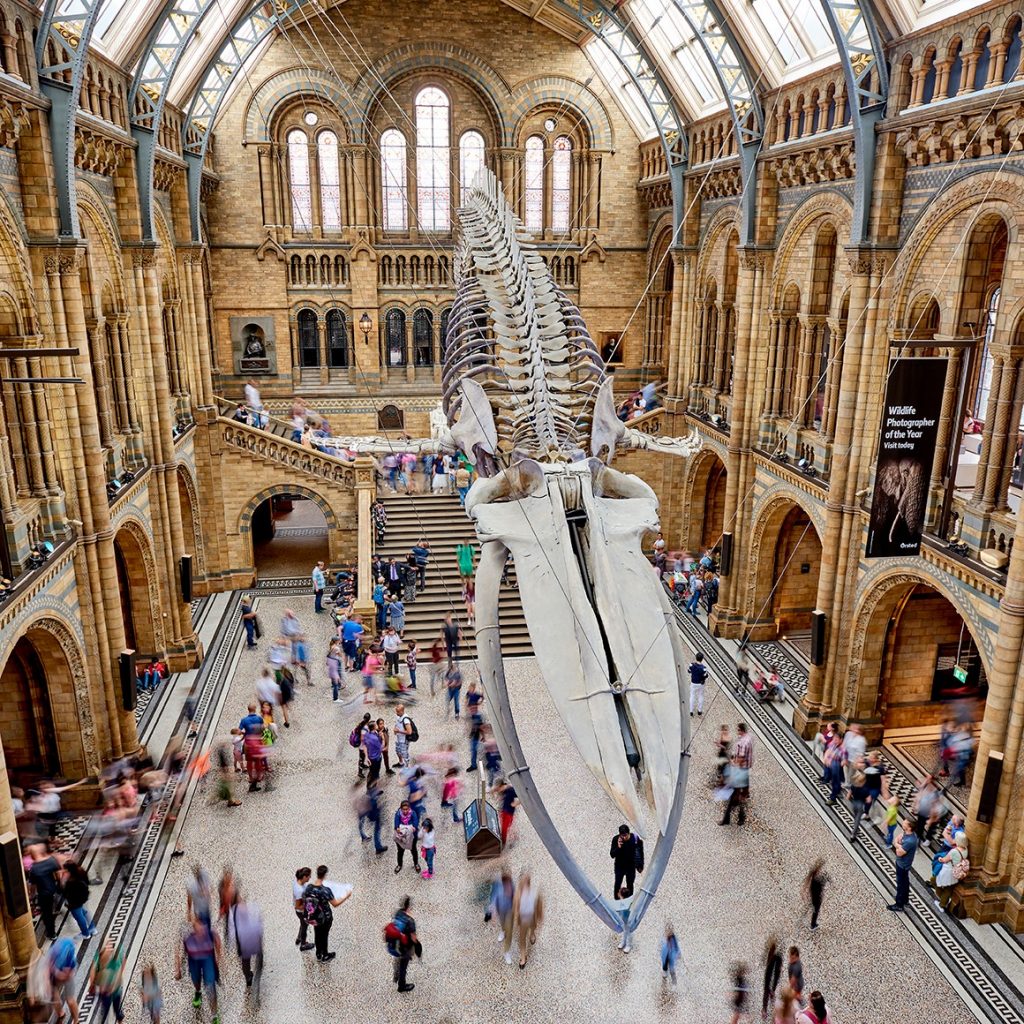Natural History Museum

The Natural History Museum is one of three major museums located on Exhibition Road in South Kensington. The main front entrance, however, is on Cromwell Road. As the name suggests it exhibits a wide range of specimens from various segments of natural history. For the convenience of visitors, the Museum is divided into five major collections: botany, mineralogy, entomology, palaeontology and zoology. The museum is a world-renowned institution with specimens collected by Charles Darwin himself.

History
Between the years 1660 – 1753 Sir Hans Sloane allowed British Government to buy significant collections for a price well below their market value. It contained animal and human skeletons, dried plants and more. Until 1992, the Natural History Museum was officially known as The British Museum, despite the fact of legal separation form the British Museum in 1963. One of the most prominent exhibits in the museum was the “Dippy” which was a 32 m (105 ft) long replica of Diplodocus skeleton in Pittsburgh’s Carnegie Museum of Natural History. The cast was a gift from Scottish-American industrialist Andrew Carnegie. In 2017, after 112 years, this replica was replaced by an actual skeleton of a young blue whale. This iconic specimen is located in the famous “Large Mammals Hall”. This impressive skeleton is more than 25m long and weighs about 10 tons.
Something good for everyone
The Natural History Museum is divided into 4 zones. First, the Red Zone, is accessible from Exhibition Road on the East side of the building. It concentrates primarily on geology and contains various rocks, fossils and minerals. The “Lab Area” inside allows an interactive approach to the gallery by allowing visitors to use actual microscopes. The Green zone is focuses on ecology, birds and “creepy crawlies”. The Blue zone is all about dinosaurs, fishes, amphibians, reptiles, mammals and human biology. The Orange zone is a home to the Darwin Centre and the Wildlife Garden. The museum provides a series of public educational programmes such as “How Science Works”. This program allows school students to use actual microfossils in geological research. Most of the Natural History Museum expositions are free of charge, however, some temporary exhibitions will require a fee.
The most interesting facts according to Connect-Click:
- The National History Museum has a mechanical model of tyrannosaurus rex which allows visitors to experience one of the largest predator that has ever walked the earth.
- Today, The National History Museum collection contains over 70 million botanical items, 9 million relics from archaeological digs, 55 million exhibits of animals and over 500 000 rocks and minerals.
Address: Cromwell Rd, Kensington, London SW7 5BD
Fb: https://www.facebook.com/naturalhistorymuseum
Tw: https://twitter.com/NHM_London
